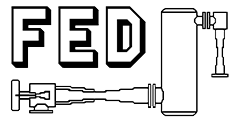Research and development play an important role at Körting Hannover AG. As an integral part of corporate strategy we want to improve our own products consistently. Körting considers itself a manufacturer of cutting-edge technologies and enables customers to benefit directly from its developments. Körting Hannover AG uses advanced testing equipment to carry out development work for its subsidiary HANS HENNIG GmbH too.
A variety of options
The facilities have been designed so that the whole spectrum of industrial combustion technology can be examined. The pilot plants cover combustion systems to instrument and plant technology. The upshot is an integrated approach to the way all power-supply and waste gas facilities in a combustion plant are looked at. Flame geometries, temperature profiles and their impact on combustion can be captured in pulverised, liquid and gaseous fuels of any air/fuel ratio.


Efficiency and eco-friendliness
Reducing emissions and increasing efficiency enjoy high priority during the analyses and tests. For example a number of primary and secondary emission-reduction measures such as fuel and air staging, various scrubbing methods, injecting calcium oxide, urea, NH3 or steam can be examined and assessed for each of the fuels.
Measures to increase efficiency can be examined, such as applying speed-controlled electric drives, enhancing combustion and using O2 controls, as well as substituting fossil for bio fuels, or combustible waste from production or processes.
Measures to increase efficiency can be examined, such as applying speed-controlled electric drives, enhancing combustion and using O2 controls, as well as substituting fossil for bio fuels, or combustible waste from production or processes.
Versatile pilot plants
The plants consist of all components and power units, so that all the diverse issues involved in modern combustion technology can be examined scientifically and in real-world conditions. Any pulverised, liquid and gaseous fuels can be used for combustion. Applications with different combustion chamber types can be analysed. Therefore there’s a whole host of ways of finding combustion systems and plant components for fossil fuels and renewables, as well as combustible waste from production and processes that complement each other perfectly.
Because the pilot plant is fast to adapt, it can be changed to suit requirements. Two combustion chambers are located in the middle of the plant, a brick-lined one and a steel combustion chamber that each 1.6 MW burner can be installed on. Any combustion performance can be analysed via a model calculation.
Because the pilot plant is fast to adapt, it can be changed to suit requirements. Two combustion chambers are located in the middle of the plant, a brick-lined one and a steel combustion chamber that each 1.6 MW burner can be installed on. Any combustion performance can be analysed via a model calculation.


CFD simulation to reduce NOx and CO
The results from simulations on the influence of particle sizes, flow and mixing fields allow optimisation of the burner design. The goal of these enhancements include ensuring a more even blend of the fuel with the combustion air and therefore combustion at lower temperature peaks and lower NOx emissions as a consequence. This is where the pilot plant offers a range of different options for verifying the results from the CFD simulations.

